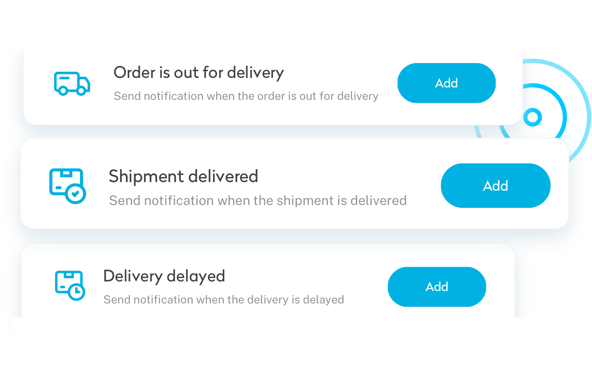This year’s e-commerce peak season will present a particular set of challenges with high demands on the supply chain and challenging bottlenecks – all of which can impact customer service teams.
Ensuring high-quality peak season customer care doesn’t only mean expanding your team resources to handle the increased volume of inquiries. It can also mean optimizing your post-purchase experience communications, so customers already have the information they seek.
Planning for the increased demands placed on your customer service team should be part of e-commerce peak season preparation. And, of course, one of the best ways to solve problems is to avoid them, to begin with.
Here’s how to set up your delivery experience to reduce the number of customer service inquiries about delivery and returns.
Provide shipment tracking to avoid WISMO inquiries
Selected, clicked, purchased – so far, so good. But the customer journey doesn’t end at your online shop’s checkout. Most customers want a way to follow what’s happening with their order. Probably the most frequently asked question to customer service teams during peak is Where is my order? (WISMO). And whether they are reaching out to your customer support via phone or email, queries like these cost time and money. That’s where tracking pages can reduce the workload of your customer service team.
A mobile-optimized tracking page can help customers follow the delivery process and ensure full transparency. Plus, the potential of a well-built tracking page is huge. A clever user interface can actively guide customers back to your shop (instead of a carrier website), where you have a chance to increase your repurchase rates.
A 2021 consumer survey commissioned by Seven Senders, based on an analysis of nine European markets, details the kind of communications customers expect in each region. On average, across the different countries, dispatch confirmations were of most interest (74%), followed by parcel tracking (57%) and messages about any potential delays (54%). It makes sense to send notifications via several different channels such as email and SMS and to provide information as comprehensively as possible along each stage.

Proactively communicate about delivery delays
Product not currently available? Will goods take longer to ship? Has a delivery been delayed? During peak season, it’s crucial to set up automatic notifications regarding delivery delays–no matter the reason. Not only does this take pressure off your customer service team, but it allows you to make a connection to customers by showing you care and are actively taking care of the situation.
Sending notifications about delivery delays offers a number of benefits:
-
The customer is kept up to date and doesn’t need to contact customer service.
-
Well-informed customers are less likely to negatively rate their personal experience of the shipping process–even if it caused them inconvenience.
-
Last but not least, proactive communication helps to ensure better customer loyalty.
![]()
Be transparent about your returns policy and process
Peak season also means peak season for returns. But what is the best way to handle returns so that you can increase customer satisfaction and manage the work involved in the smartest way? One way is to make sure your returns policy is up-to-date and easy to find on your online shop. Being clear about the terms and conditions regarding your return options and having them easy to find on your website can save your customer service teams from having to field unnecessary inquiries.
Make returns more digital
How you manage returns also affects the amount of strain on your customer service team. Start by setting up processes that allow customers to manage returns more independently. For example, by allowing customers to download return labels and initiate return shipments themselves.
Automated status updates during the returns process are also a big help to customers and big relief for your support teams. Proactive automated notifications regarding whether return goods have been received or whether a refund has been initiated or issued means the customer won’t have to reach out to get this valuable information.
In addition, a good returns process also creates customer loyalty. 57% of customers who have had a positive returns experience will return to the store. Now, there’s an incentive!
Proactive customer communication with Seven Senders
The Seven Senders delivery platform enables you to benefit from a one-stop solution for all your shipping needs. From branded tracking pages to automated notifications we have the services you need to ensure your customers are getting the right information and the right time. By optimizing your customer communications you can significantly reduce inquiries to your customer service team, saving you on time and resources!
Find out how Seven Senders can help you have a successful peak season and contact us now to receive an individualized offer.
